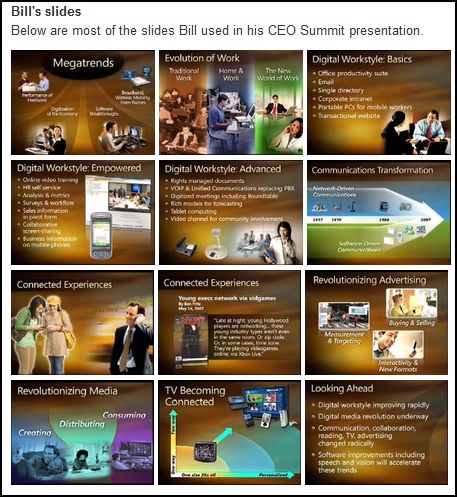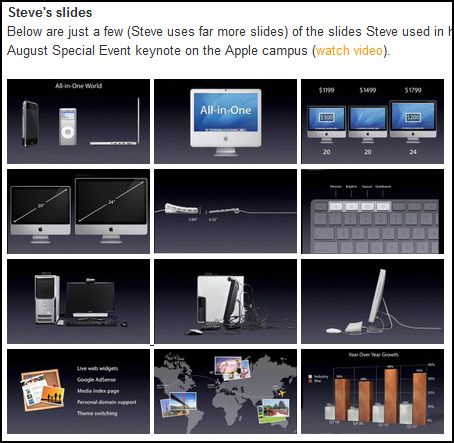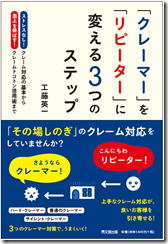Presentation-zen で言われているプレゼンの6カ条です。いわれてみれば当り前ですが、技術ではなく、もっと深いところに焦点を当ており、人に伝えることの本質が問われています。
(1) Design. デザインDesign is fundamentally a whole-mindedaptitude, or as he says, “utility enhanced by significance.”Rather it is something which goes “souldeep.”
(2) Story. ストーリー”What begins to matter more [than mere data] is the ability to place these facts in context and to deliver them with emotional impact.” Cognitive scientist Mark Turner calls storytelling “Narrative imagining,”something that is a key instrument of thought. We are wired to tell and to receive stories. “Most of our experiences, our knowledge and our thinking is organized as stories,” Turner says.
(3) Symphony. 調和To me, Symphony is about utilizing our whole mind — logic, analysis, synthesis, intuition — to make sense of our world (i.e.,our topic), finding the big picture and determining what is important and what is not before the day of our talk. It’s also about deciding what matters and letting go of the rest.
(4) Empathy. 共感Empathy is emotional. It’s about putting yourself in the position of others. It involves an understanding of the importance of the nonverbal cues of others and being aware of your own. Good designers, for example, have the ability to put themselves in the position of the user, the customer, or the audience member.
(5) Play. 遊び心Remember, for example, that twenty years ago or so business — especially big business — rejected the idea of a graphical user interface for “serious computing” because business should be “difficult” and “serious,” ideas that seemed incongruent with a mouse (how cute!) icons, pictures, and color, etc. Today, of course, almost every serious business person users a computer with a GUI.
(6) Meaning. 意味Some say that we “are born for meaning”and live for self-expression and an opportunity to share that which we feel is important. If you are lucky, you’re in a job that you feel passionate about. If so, then it’s with excitement that you look forward to the possibility of sharing your expertise — your story — with others. Few things can be more rewarding than connecting with someone, with teaching something new, or sharing that which you feel is very important with others.
ビルゲイツとジョブスは対照的。それをもっとも的確に表しているのが、SLIDEの作り方です。
(http://www.presentationzen.com/presentationzen/2007/09/steve-bill-redu.htmlより)

これは、ビルゲイツのスライドです。私たちが作るような、普通の作り方です。
説明が入っていて、良く分かります。

これは、ジョブスが使うスライドです。非常にシンプルです。
このスライドだけで見ると、ある意味間が抜けたような感じでなのですが、スライドの前にジョブズが立って話し出すと、ものすごく素晴らしいもののように思えてきます。
スライドは、説明するためではなく、聴衆の想像を掻き立て、彼と彼の話に引き込むためにあるのです。
これらのプレゼンは 是非みておいてください。言葉の本質が分かります。
◆ PowerPoint の使い方ユーモア講演
a.Don McMillan によるプレゼンテーション。スタンフォード大 Elect r ical Engineer ing の修士号をもつ多彩な職歴のエンジニアPOWERPOINT の悪い使い方を、ものすごくおかしく紹介しています。腹が痛くなります。
http://vids.myspace.com/index.cfm?fuseaction=vids.individual&videoid=1529637984
b.大人気の本物のエコノミスト Yoram Bauman がPowerPoint とbullet points を効果的に使ったお笑いものです。バレットポイントの上手く使い、笑いを引き出しています。
c.コミュニケーションにおいて言葉は7%しか重要性をもっていません。このことを実証しようとしたパロディーです。「CHIKEN」という単語一つとPOWER-POINT だけで、ものすごくたのしいプレゼンを実践しています。
そして最後に、本物のプレゼンテーション
◆ 伝説のプレゼンテーションスティーブジョブスのAPPLE 発売の講演
人の心を動かすとはこのことをいいます。これぞプレゼンテーション!
一生にいちどでいいから、こんなプレゼンをしてみたい!



![Validate my RSS feed [Valid RSS]](https://qualia-partners.com/wp/wp-content/uploads/2012/03/valid-rss-rogers.png)
